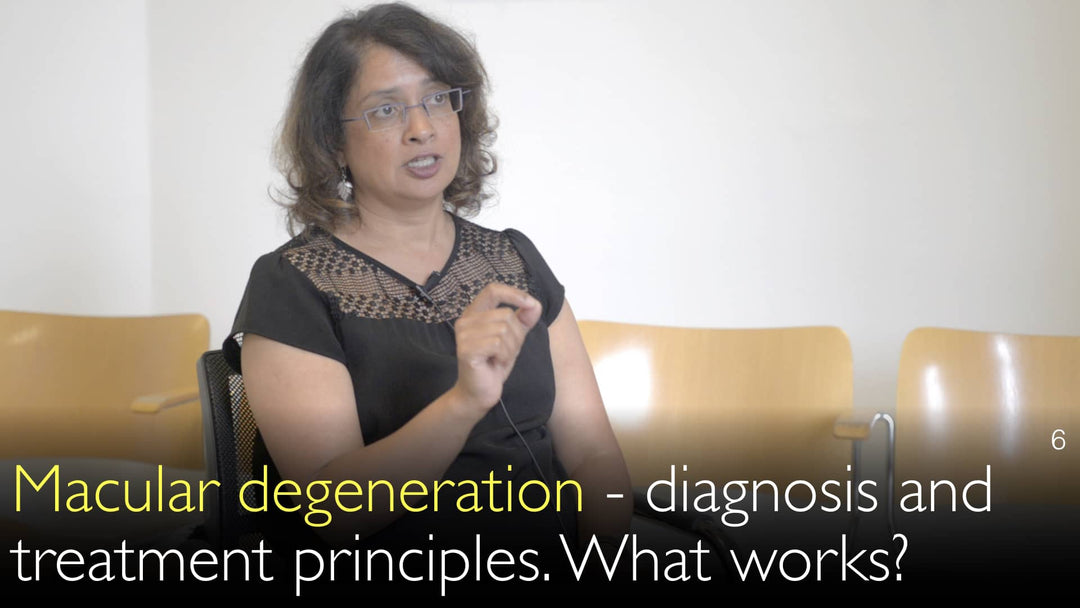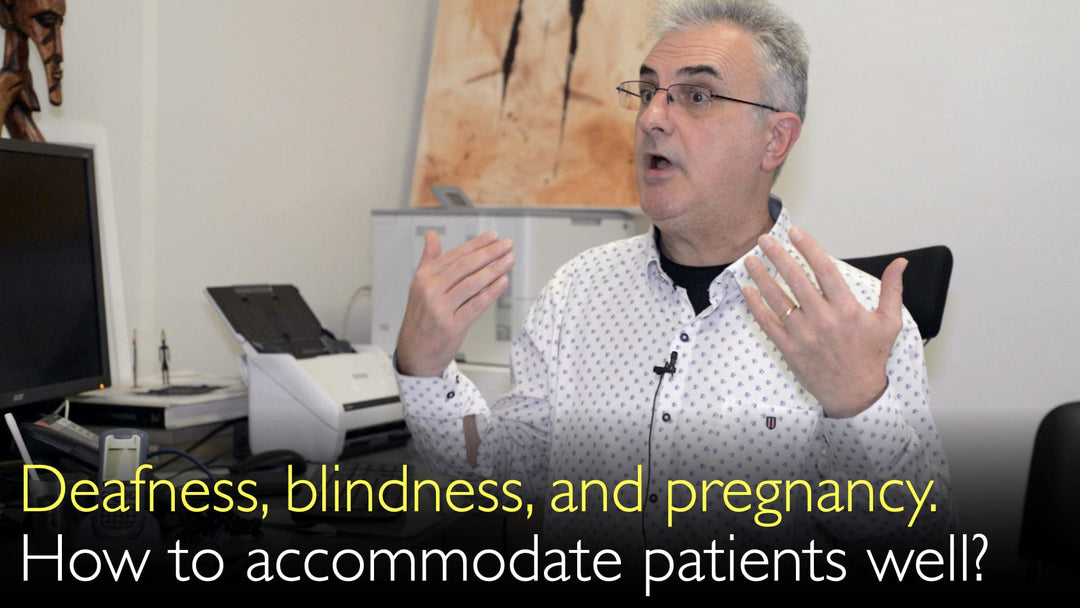Leading expert in ophthalmology and rare eye diseases, Dr. Dominique Bremond-Gignac, MD, shares a compelling case study demonstrating how thorough patient history and clinical phenotyping led to diagnosing Kimura disease in an 8-year-old boy with unusual conjunctival tumors, highlighting the critical role of physician-patient communication in complex diagnoses.
How Detailed Medical History Revealed a Rare Kimura Disease Diagnosis in Pediatric Ophthalmology
Jump To Section
- Unusual Conjunctival Tumors in an 8-Year-Old Boy
- The Diagnostic Challenge of Atypical Kimura Disease
- Critical Clue from Family Medical History
- Surgical Treatment and Long-Term Outcomes
- Key Lessons for Ophthalmologists and Pediatricians
- Why Comprehensive Phenotyping Matters in Rare Diseases
- Full Transcript
Unusual Conjunctival Tumors in an 8-Year-Old Boy
Dr. Dominique Bremond-Gignac, MD, recounts a remarkable case involving an 8-year-old boy referred for what appeared to be simple conjunctivitis. The child presented with bilateral conjunctival tumors exhibiting unusual characteristics - vascularized, blackened granulomas that had been progressively growing over 6-8 months. This atypical presentation at a tertiary care center immediately raised red flags for the experienced ophthalmologist.
The case stood out because conjunctivitis rarely requires specialist referral, yet these tumors demonstrated concerning features. Dr. Dominique Bremond-Gignac, MD, emphasizes that such unexpected findings in routine referrals often signal underlying rare conditions needing expert evaluation.
The Diagnostic Challenge of Atypical Kimura Disease
The clinical picture presented several diagnostic puzzles. Kimura disease typically affects Asian populations and isn't considered genetic, yet this patient was of Norman descent with only partial Asian ancestry through his mother. The disease usually manifests in salivary glands rather than ocular tissue, making this conjunctival presentation exceptionally rare.
Dr. Dominique Bremond-Gignac, MD, notes that without careful history-taking, the pathologist might have missed the Kimura disease diagnosis entirely. The case underscores how rare diseases can manifest in unexpected ways, requiring clinicians to maintain broad diagnostic consideration.
Critical Clue from Family Medical History
The diagnostic breakthrough came when Dr. Bremond-Gignac noticed facial abnormalities in the father and inquired about his medical history. The father revealed his own childhood parotid gland removal due to Kimura disease at age 11 - information that became pivotal in solving his son's case.
This interaction demonstrates how physician observation and thorough family history can uncover crucial diagnostic connections. The father's condition, though not classically genetic, suggested a possible hereditary component in this atypical presentation.
Surgical Treatment and Long-Term Outcomes
Dr. Bremond-Gignac proceeded with surgical removal of both conjunctival tumors, with histopathology confirming Kimura disease. The child later developed kidney complications, a known systemic association of the disease, requiring intensive treatment.
While the case had serious implications, the accurate diagnosis allowed for appropriate monitoring and intervention. Dr. Bremond-Gignac stresses that timely diagnosis significantly impacts outcomes for rare diseases where treatment protocols exist but may not be widely known.
Key Lessons for Ophthalmologists and Pediatricians
This case offers several practice-changing insights. First, persistent "conjunctivitis" unresponsive to treatment warrants specialist evaluation. Second, unusual ocular findings should prompt thorough systemic and family history reviews. Third, rare diseases may present outside their typical demographic or anatomic patterns.
Dr. Dominique Bremond-Gignac, MD, emphasizes that taking extra time with patients and families often yields critical diagnostic information that laboratory tests alone cannot provide.
Why Comprehensive Phenotyping Matters in Rare Diseases
Dr. Dominique Bremond-Gignac, MD, highlights this case as a prime example of clinical phenotyping - systematically documenting all physical characteristics and symptoms before pursuing genetic testing. In rare diseases, accurate phenotyping guides appropriate genetic analysis and prevents misdiagnosis.
Dr. Dominique Bremond-Gignac, MD, concludes that physician-patient communication remains the most powerful diagnostic tool, especially for atypical presentations of rare conditions like Kimura disease. This approach ensures patients receive accurate diagnoses and appropriate treatments even for exceptionally uncommon manifestations.
Full Transcript
Dr. Anton Titov, MD: Is there a patient story you could discuss that illustrates some of the topics we discussed today? You mentioned one patient story, which is very interesting, for retinal vein occlusion. You had a whole series of patients. Is there any other patient story you would share with our viewers?
Dr. Dominique Bremond-Gignac, MD: I think of patient stories every day. There are many stories, but there's not enough time to explain them all. I'll share one patient story that reflects our everyday practice, because every patient is a story. Sometimes a diagnosis is quite easy to solve, but sometimes a clinical case takes a long time to solve.
I had an eight-year-old boy referred to me for conjunctivitis. When I saw the conjunctivitis, it was unusual—typically they don't refer conjunctivitis cases to a tertiary center, as it's supposed to be treated very easily. This child had two tumors in the conjunctiva on both sides. It was the first time I'd seen that.
His father was present, and the tumors appeared vascularized but very strange, like blackened granulomas. I discussed with his father, who mentioned the tumors had been growing for six to eight months, first in one eye and then the other. I asked if the child had any other problems, and the father said no.
Then I noticed the father had a strange facial appearance. I asked if he had any medical issues. He replied, "Yes, I had both parotid glands removed when I was 11 years old. My mother said I had Kimura disease."
Kimura disease is not supposed to be genetic and typically occurs in Asian patients. This family was from Normandy, though the mother was from Asia. We discussed the situation, and I removed both tumors from the child. The diagnosis was Kimura disease.
When you take time to ask parents questions and discuss with them, you can solve problems. This child later developed kidney problems and required heavy treatment, but he is doing well now. Having the correct diagnosis was very important.
This case illustrates how crucial it is to have a complete clinical history. Without the father's history, the pathologist might not have diagnosed Kimura disease so easily. It's not just about pathology or surgery—it takes an astute expert aware of rare diseases to make timely diagnoses.
We need to take time with patients, discuss with them, and carefully establish all signs and symptoms before moving to genotyping. All these steps are very important in diagnosis and treatment.
Dr. Anton Titov, MD: Thank you, Professor Dominique Brémond-Gignac. Is there a topic or question I didn't ask but should have asked? Is there anything else in your experience you'd like to share?
Dr. Dominique Bremond-Gignac, MD: No, I think we are here to cure patients, to take care of them, and to provide clinical guidelines for diseases we know more about than others do. We should continue this approach for patients.
Dr. Anton Titov, MD: Thank you very much for this very interesting conversation! We hope to speak with you again in the future about progress in gene therapy for common myopia, nearsightedness, retinal eye diseases, and anterior eye problems. There is so much to discuss! I very much appreciate this conversation, and I'm sure everyone will find it very useful. Thank you very much!
Dr. Dominique Bremond-Gignac, MD: Thank you, Anton. We keep going!







